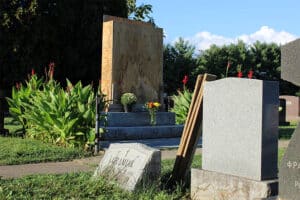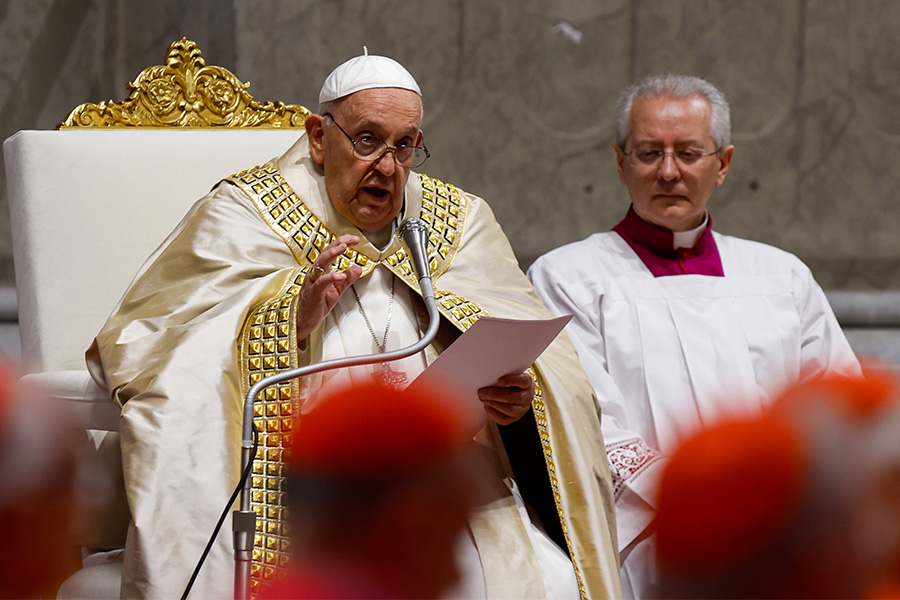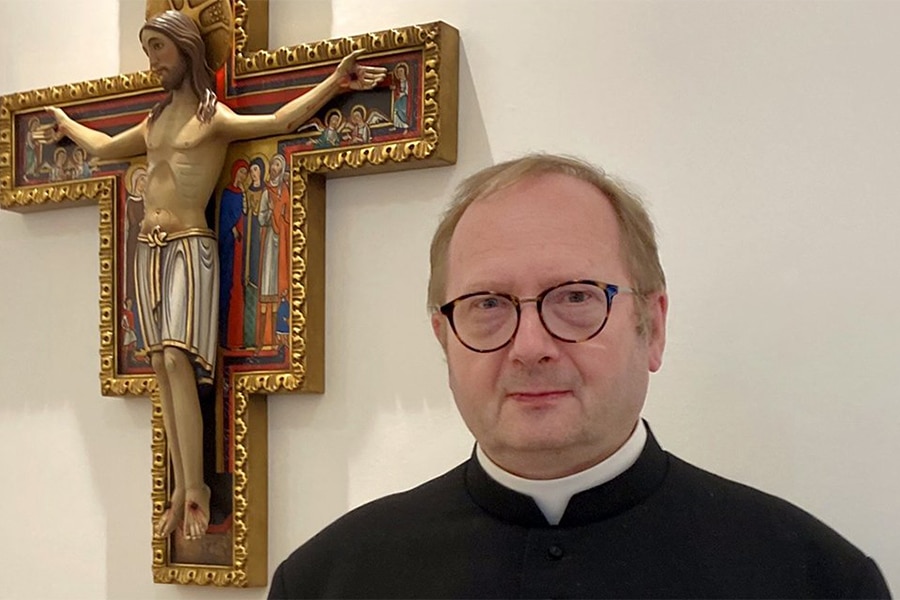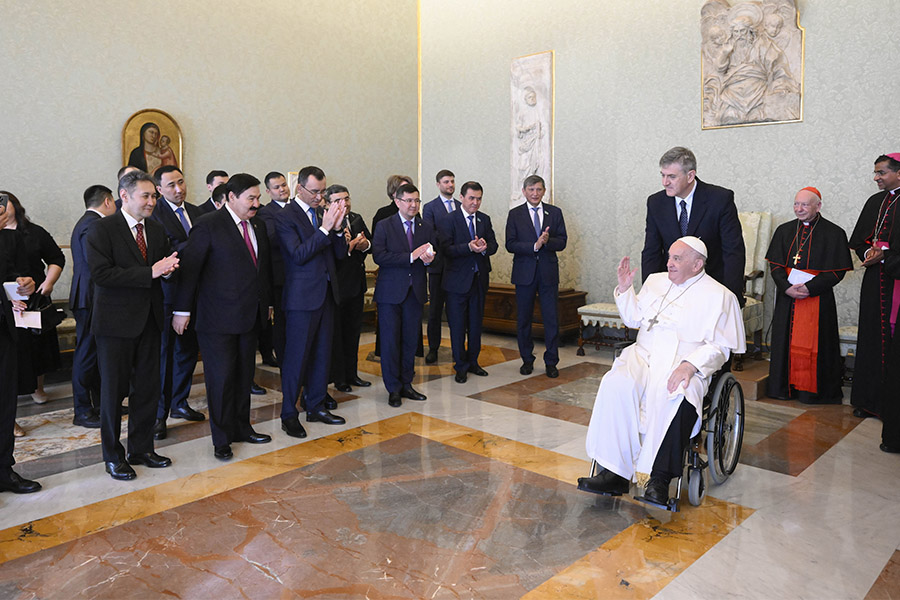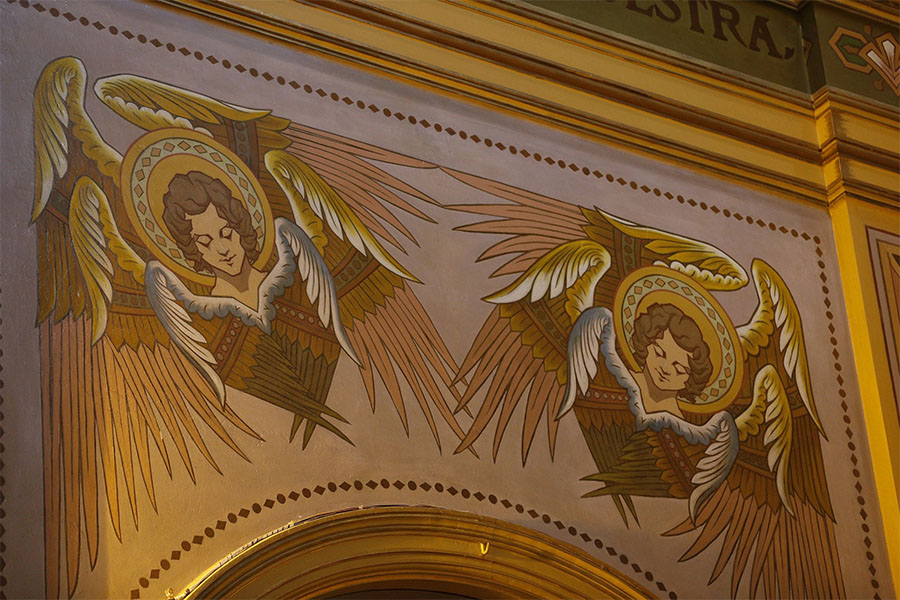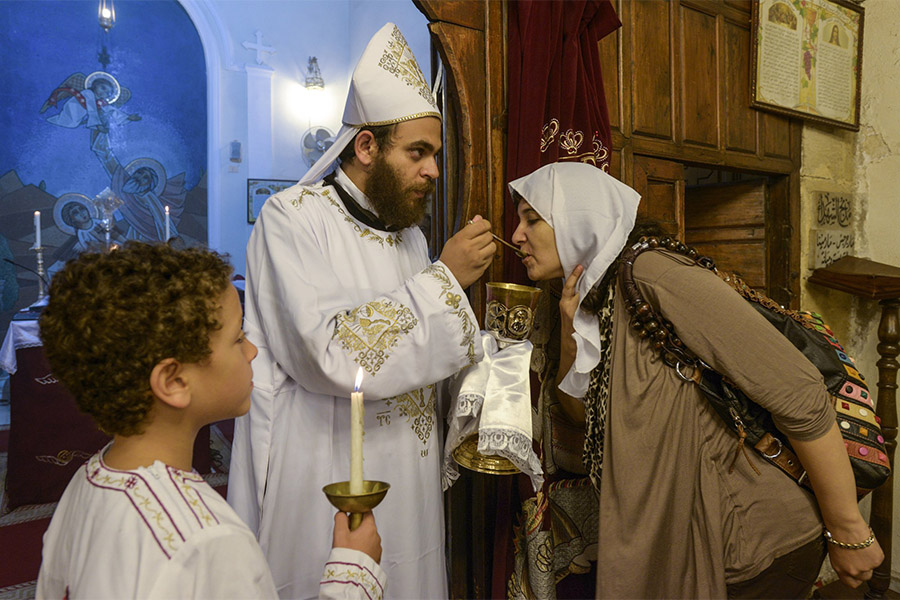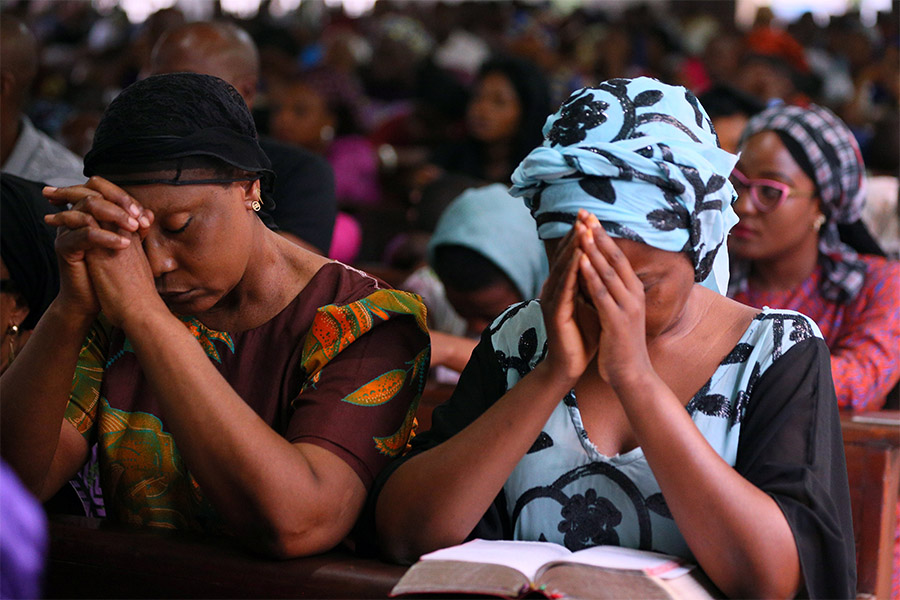PHILADELPHIA (OSV News) — The Ukrainian Catholic Archeparchy of Philadelphia has temporarily enclosed a monument to Ukrainian war dead at one of its cemeteries as it seeks “open, scholarly and compassionate dialogue” with Jewish organizations that have expressed concern over this particular memorial and the complex history behind it.
Erected during the 1990s, the black, cruciform monument — which bears the Ukrainian trident and a lion, an ancient symbol of the Galicia region — honors World War II Ukrainian soldiers who (under occupation by Nazi Germany, which regarded Ukrainians and other Slavic peoples as subhuman) fought in Germany’s 14th Waffen-SS “Galicia” Division, later known as the 1st Division of the Ukrainian National Army in 1945. Similar memorials exist among the Ukrainian diaspora throughout the U.S., Canada and the United Kingdom.
For decades, the Ukrainian soldiers’ participation in the division has been the focus of extensive inquiry by academics and investigators, with researchers noting soldiers joined the division as a means of attaining Ukrainian independence amid repression by both the Nazi and Soviet regimes. During the 1980s, three separate commissions in Canada, Australia and Britain found little to no evidence of the soldiers’ participation in Nazi atrocities.
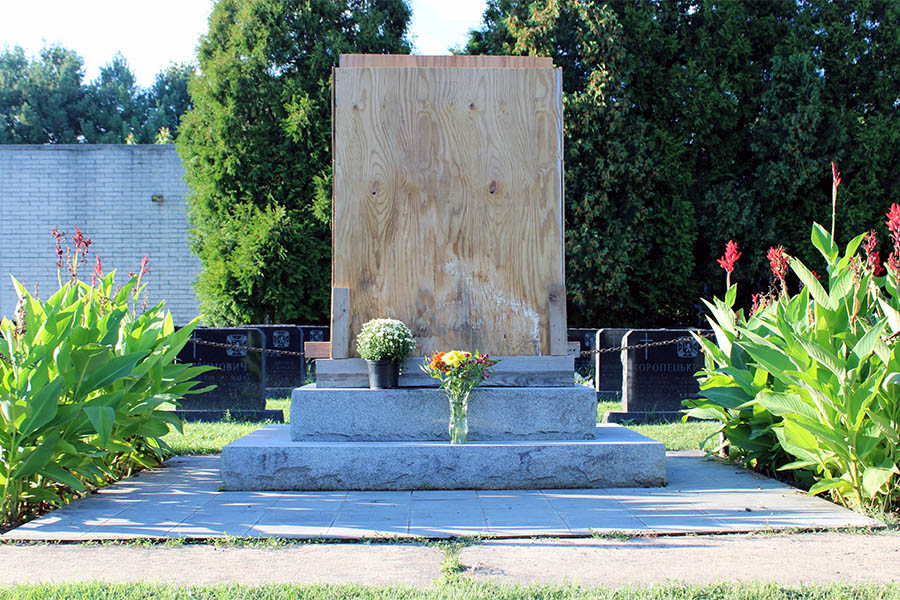
Recent articles in the American Jewish news outlet the Forward and The Philadelphia Inquirer about the monument revived controversy over that legacy. In May, Moss Robeson — an independent researcher whose work is highly critical of Ukrainian nationalism — posted an image of the monument on X (formerly Twitter), claiming the monument had “apparently flown under the radar” for the past three decades.
Since then, a number of groups, including the American Jewish Committee, have called for the removal of the monument.
In a Sept. 8 statement, Metropolitan Archbishop Borys Gudziak of Philadelphia said the recent news articles had “alarmed and hurt the Jewish community of Philadelphia” and “at the same time … evoked concern among the Ukrainians in the area.
“The pain in our communities reflects the tragic and traumatic history of the twentieth century — a century when millions were brutally slaughtered by totalitarian regimes,” said the Ukrainian Catholic archbishop, a trained historian who holds a doctorate in Slavic and Byzantine cultural history from Harvard University.
“The Ukrainian Catholic Archeparchy of Philadelphia values its relationship with the Jewish community and intends to address the issues at hand with the depth and seriousness that they deserve,” said Archbishop Gudziak.
That task requires understanding the “complicated history” of the Galician division, Myroslav Shkandrij, visiting professor of history at Columbia University’s Harriman Institute for Russian, Eurasian and East European studies in New York, told OSV News by phone Sept. 13.
Shkandrij said the controversy presents “an educational opportunity … to talk about what really happened, what these people did or did not do, and then reach a consensus.”
The question of “why these men joined” the Galician division “is generally not explained well or even mentioned in articles,” said Shkandrij, an expert who has just published a new book on the subject titled “In the Maelstrom: The Waffen-SS ‘Galicia’ Division and Its Legacy.”
With the division itself created in 1943 as Germany’s impending defeat became clear, “the big question is why would these people sign up for a losing cause?” said Shkandrij.
The existence of a Ukrainian legion that had fought within the Austrian army during World War I and eventually became “an army of (Ukrainian) independence” led Galician soldiers to “(expect) something similar,” he explained.
The soldiers’ own experiences of atrocities at the hands of Nazi and Soviet regimes were formative as well, said Shkandrij.
Following the 1939-1941 German-Soviet nonaggression (Molotov-Ribbentrop) pact, western Ukraine’s society was “destroyed,” said Shkandrij.
“All independent organizations, all cooperatives, all national institutions were destroyed, and hundreds of thousands of people were arrested and sent to Siberia,” he said. “And that experience was fundamental to shaping the mentality of people in Galicia.”
“Many of them said, ‘We would rather die with a gun in our hands than starve under German occupation,” Shkandrij said. “During the war … they witnessed their own people being hanged on street corners, they witnessed Jews being rounded up and shot, and they didn’t want to be treated as cattle. Many of them joined the (Galician) division for precisely that reason.”
Shkandrij said the Galician division operated according to certain conditions that “for the most part” were honored — among them, “they’d only fight Bolsheviks and Stalin … it would be a mechanized front-line division and it would not be used in police work.”
Notably, the Ukrainians, who as Slavs were regarded by Hitler as “subhuman … were not allowed to be called members of the SS,” said Shkandrij.
He noted that during the 1980s, three formal inquiries — a 1986 report by Australian parliamentarian Andrew Menzies, the 1987 Deschenes Commission in Canada, the 1989 Hetherington-Chalmers inquiry in Britain — dismissed accusations that Galician division soldiers had committed war crimes and atrocities.
Shkandrij also addressed the 1944 Huta Pieniacka (Peniatska) massacre, which has been cited in the recent articles on the monument, and for which the Galician division is commonly blamed. Polish and Ukrainian presidents have jointly commemorated the 500-1000 Polish civilians who were slain in the attack.
“In all likelihood, some of the perpetrators were from a police regiment composed of Ukrainians,” Shkandrij wrote in a Sept. 13 follow-up email to OSV News. “These men had volunteered for the Galicia division but had not been taken into the force. Instead they were sent to the 4th regiment to do police work, meaning to fight Soviet and pro-Soviet partisans.”
The regiment “was not part of the Galicia division, nor was it under the division’s control or orders,” said Shkandrij, who discusses the issue in his new book. “The confusion stems from the fact that the unit involved was called the 4th SS Galician Volunteer Regiment. Understandably, witnesses and later reports did not point out the distinction between the Division itself and the 4th and 5th police regiments.”
He added that “the division’s spokespeople always agreed that individuals who perpetrated atrocities should be tried and punished if found guilty.”
Read More Ecumenism & Interfaith Relations
Copyright © 2023 OSV News
